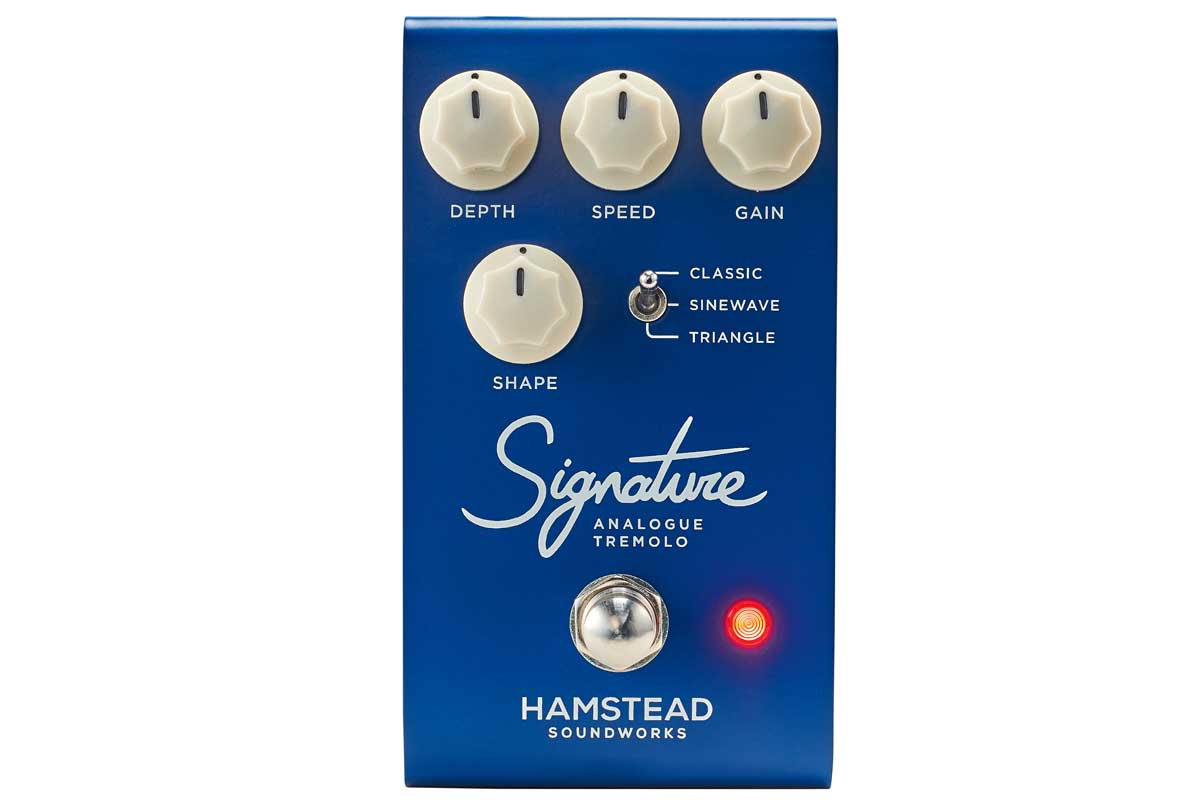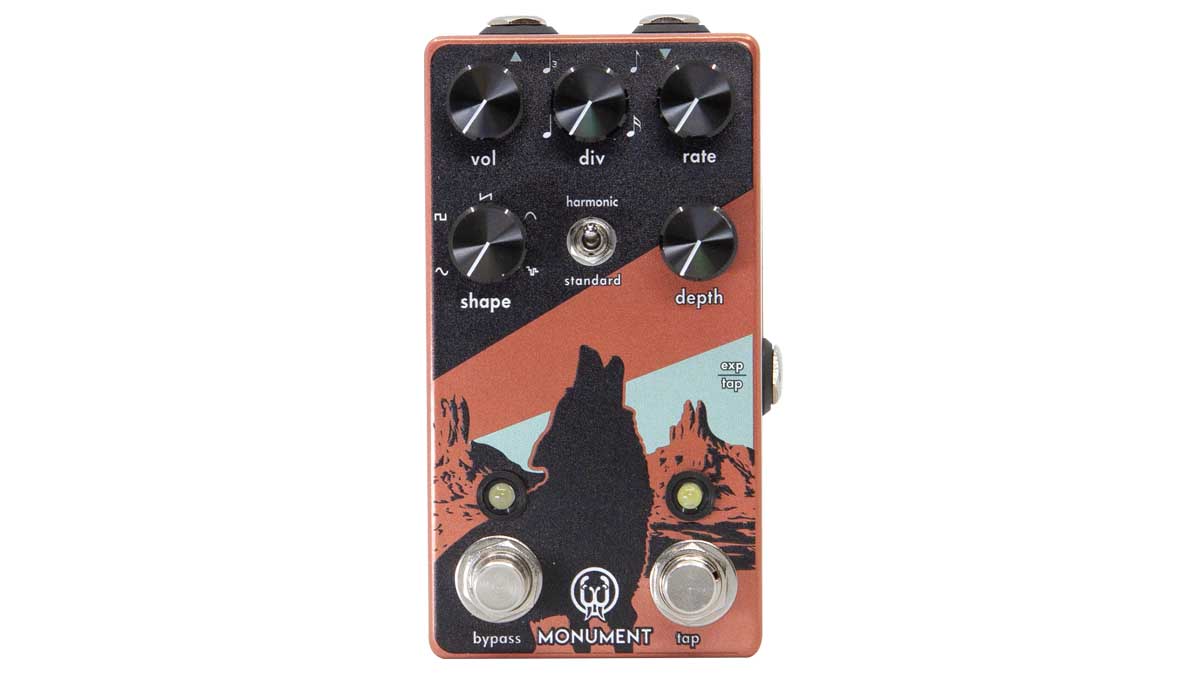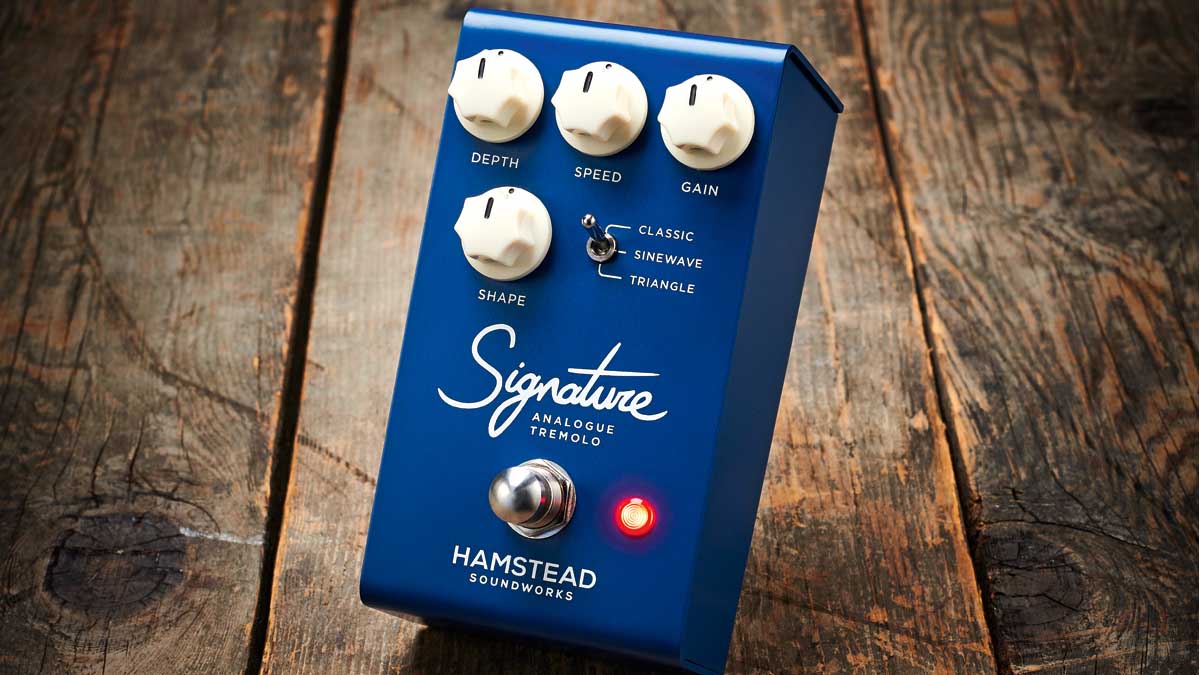Guitar World Verdict
Offering a trio of waveforms and 10dB of boost in a more compact format, the Hamstead Soundworks Signature Analogue Tremolo remains a solid choice for impeccably built, vintage-inspired tremolo.
Pros
- +
Rock-solid build quality.
- +
Classy tone.
- +
10dB of usable boost.
- +
Shape knob.
- +
Expression pedal control.
Cons
- -
Nothing really, but be aware that the differences between waveforms are subtle.
You can trust Guitar World
Hamstead Soundworks first put the tremolo circuitry from its Artist +RT series amps into a pedal in 2016 with the Signature Analogue Tremolo, and now the company is back with a MKII version.
This time it loses the extra footswitch for the boost circuit but offers a smaller footprint, a control input, a third waveform for the tremolo and a Shape control delivering the ability to tilt any of the waveforms to the left or right.
As an all-analogue design, the pedal eschews the common use of digital waveform circuitry for an analogue circuit, resulting in three subtly different but great-sounding waveforms.
The Classic setting delivers the authentic sound of output bias tremolo as found in some vintage amps, while Hamstead’s signature sinewave tremolo is buttery smooth, melding naturally with your tone.


• Walrus Audio Monument V2
Pretty much a do-everything trem, this features an extra tap tempo footswitch, five tremolo waveform shapes, and the choice of standard trem or the Harmonic type with a whisper of pitch shift.
• Supro 1310 Tremolo
A straightforward design with standard or harmonic tremolo. Extra tonal mojo comes via a Gain knob, which sets the level of preamp gain, adding various degrees of overdriven texture to the tremolo.
• Effectrode Delta-Trem
This is the UK-based valve pedal specialist’s take on tremolo. The vacuum valve design combined with with Raysistor photocell circuitry offers vintage tremolo sounds in mono or stereo with tap tempo.
The new kid on the block is the Triangle waveform, which you might expect to be more defined, but it’s not too far removed in flavour from the sinewave. Still, the Triangle waveform is capable of sawtooth and reverse sawtooth patterns with the Shape knob in play.
That knob has no effect in its notched central position, but turned left or right it skews the tremolo waveform in that direction. To the extreme left, the swift rise to the peak gives you a sharp attack for a choppy rhythmic sound.
Piling on the Shape knob with the Sinewave and Classic modes can deliver similar sounds, but it’s great in moderation for a little lopsided wave action to recreate some of the tremolos of certain vintage amps.
From a slow deep throb to a fast shimmer, the Depth and Speed knobs give you a great range, and the speed can be placed under the control of an expression pedal for changes on the fly.
The pedal displays none of the typical perceived volume drop when the effect is kicked in, so you can use the Gain knob (with up to 10dB of transparent boost) to emphasise the effect or use it to naturally push the front-end of your amp.
Verdict
Waveform-shaping versatility adds another level to this excellent source of old-school ’board-based analogue tremolo.
Specs
- PRICE: £219
- ORIGIN: UK
- TYPE: Tremolo pedal
- FEATURES: Buffered bypass, optokick footswitch, external speed control
- CONTROLS: Depth, Speed, Gain, Shape, Modulation Mode switch, internal Power Up mode dipswitch, bypass footswitch
- CONNECTIONS: Standard input, standard output, standard Control input
- POWER: 9V-18V DC adaptor (not supplied) 250mA at 9V
- DIMENSIONS: 70 (w) x 130 (d) x 65mm (h)
- CONTACT: Hamstead Soundworks
Trevor Curwen has played guitar for several decades – he's also mimed it on the UK's Top of the Pops. Much of his working life, though, has been spent behind the mixing desk, during which time he has built up a solid collection of the guitars, amps and pedals needed to cover just about any studio session. He writes pedal reviews for Guitarist and has contributed to Total Guitar, MusicRadar and Future Music among others.
“The original Jordan Boss Tone was probably used by four out of five garage bands in the late ’60s”: Unpacking the gnarly magic of the Jordan Boss Tone – an actual guitar plug-in that delivers Dan Auerbach-approved fuzz
“This is a powerhouse of a stompbox that manages to keep things simple while offering endless inspiration”: Strymon EC-1 Single Head dTape Echo pedal review












